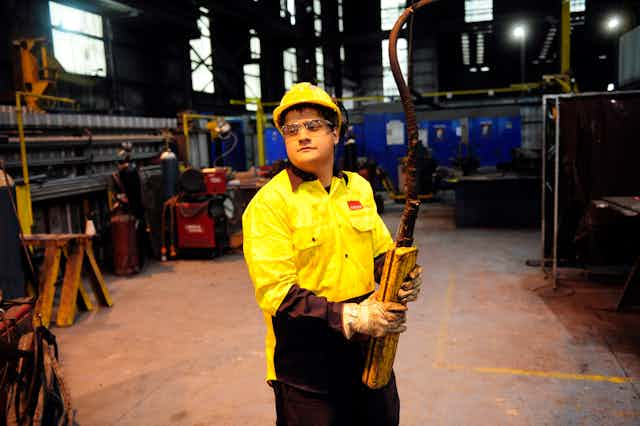Fears abound in South Australia about the future of Arrium’s Whyalla based iron ore and steel manufacturing facilities, as the company goes into voluntary administration. In a united front the South Australian and federal governments are urging calm. The administrators say it is business as usual until a review of the company’s operations is completed, which may take up to two months.
An agonising period of uncertainty is about to unfold for Whyalla, all in the lead up to the federal election. Just how well this is handled by the Turnbull government will have a major bearing on the election outcome, at least in South Australia.
The stakes are high. With the highest mainland unemployment rate (7.7%) in the nation, the last thing South Australia needs is another major plant closure. The countdown is already on for the closure of General Motors Holden and much of its supply chain next year. This is expected to drive the statewide unemployment rate above 10% in the absence of major new investments. The possible closure of Arrium’s steel manufacturing and mining operations in Whyalla adds to these woes.
South Australia’s manufacturing sector suffered greatly from the high Australian dollar. When it broke through the 100 US cents barrier in 2011, the dollar acted like a wrecking ball through the nation’s mass manufacturing industry. The dramatic appreciation during the mining boom made our manufactured exports increasingly uncompetitive in global markets. This was on top of a more protracted problem of deindustrialisation in the sector over the last few decades where around 100,000 manufacturing jobs have been lost in Australia.
Arrium’s operations dominate Whyalla. The steelworks and mining operations employ around 3,000 people or about 25% of the total workforce. By my calculations, if both close, the flow-on impacts of up to 6,000 additional job losses would be devastating for the region. Unemployment in the steel town would rise sharply from 7.4% to be among the highest in the nation. The only force preventing that would be rapid depopulation.
Arrium, our last remaining steel manufacturer, is not the only steel producer in the world facing the threat of closure. One of the drivers of this in some jurisdictions has been the dumping of cheap steel by major competitors including China. The US was recently forced to introduce duties to curb this practice. Pressure on the Australian government to do the same, promoted the federal government to initiate andinquiry into dumping of steel in industry. The results of that inquiry are urgently needed now.
Behind the scenes frantic discussions are taking place between the federal and state governments to come up with a solution. They have to test various propositions with the voluntary administrators who in turn will be in perpetual discussions with the banks. Creditors need to be convinced that a viable plan for the operations is available. So to do the federal and state government if there is any prospect of a government financial contribution to restructuring the operations.
The state and federal governments could, for example, make a contribution to upgrading ageing blast furnaces. A national agreement between the federal and state governments to procure only Australian standard certified steel could be put in place to instil confidence in creditors.
While this is all unfolding in South Australia, it is emblematic of a wider problem facing Australian manufacturing in the 21st century, the need to rapidly modernise the sector and adopt national policy settings that recognise Australian manufacturers are not playing on level playing fields.
This necessitates industry plans and policy that recognise these realities as well as a national commitment to the centrality of knowledge intensive manufacturing in advanced economies. While some steps in this direction have recently been made we are regrettably not the driver of innovation that we need to be 2016.

